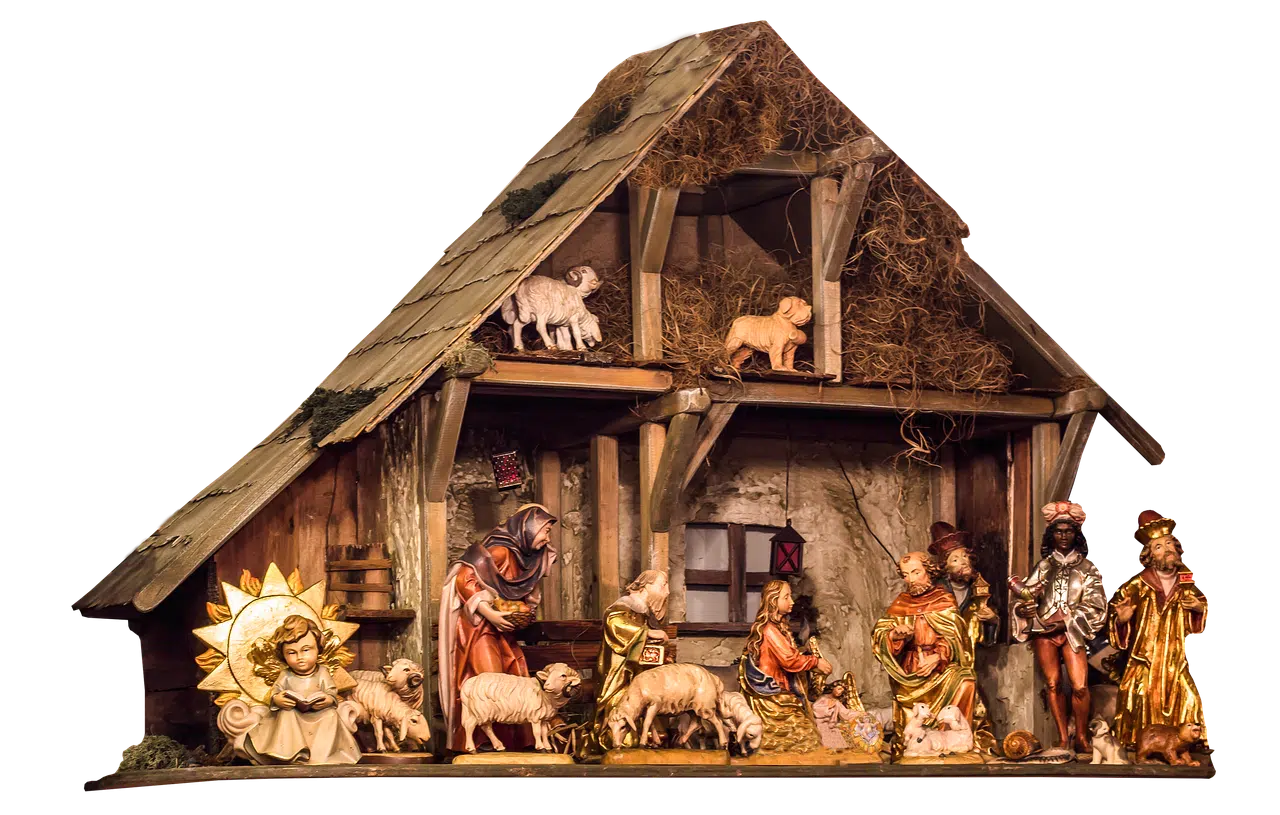
The manger represents the birth of Jesus.
A manger is a receptacle or deposit in which food is left for the animals so that they can eat. The Latin word praesepe is the etymological antecedent of the term we use in our language .
The most common use of the concept, however, is in the field of religion . The representation of Jesus' arrival into the world is known as a manger or nativity scene , which is displayed at Christmas time, whether in temples, homes, stores or in various public spaces.
The manger in Catholicism
Within Catholicism , therefore, the manger is a very important element during the celebration of Christmas . There are different types of nativity scenes, the most common being those in which small figures are used to represent the birth scene.
In this way, a home nativity scene can include a miniature stable with dolls that represent animals, the Three Wise Men who followed a star to see the birth of the son of God and, of course, the baby Jesus Christ , among other characters ( like Joseph and Mary ).
Living nativity scenes , on the other hand, are those in which figures or dolls are not used, but rather there are actors who are in charge of interpreting the scenes . In some cases, these nativity scenes also feature real animals, such as sheep or goats.

A manger can have different characteristics.
Arming according to tradition
The assembly and display of the manger depend on the tradition of each country. One possibility is to assemble it on December 8 ( Day of the Virgin ) and place the figure of Jesus Christ only after Christmas (the birth). In these cases, it generally remains exposed until Three Kings Day .
Nativity scenes installed in public places have several objectives, such as beautifying a city, expressing respect for religious traditions with greater intensity or attracting the attention of tourists. Year after year, along with the Christmas season come some nativity scene designs worth admiring, regardless of beliefs.
On the other hand, the manger is also the focus of competitions to obtain world records, generally focused on its dimensions. In 2011, for example, first place went to Mexico, more specifically for the nativity scene displayed in the parking lot of the Azteca stadium , both with respect to its extension (20 thousand square meters and 57 biblical scenes) and the number of figures (which exceeded thousand).
Putting together a manger with these characteristics requires considerable work and dedication. In addition, it is normal for the results to be published through social networks through photos, videos and articles to attract the attention of as many people as possible.
Creative cribs
Modern nativity scenes usually have mobile figures , generally electrically powered, although completely mechanical dolls still exist. For example, since 1998 a purely mechanical nativity scene has been on display in the Czech Republic and has been awarded as the largest of its kind in the world. It is called the Krýza nativity scene and extends over 60 square meters, with 1,389 figures, of which 133 are mobile.
When building a nativity scene there are no rules that limit creativity, as long as the symbols that represent its figures and landscapes are respected. The ice nativity scene in Graz , Austria , is an example of this; It was created in 1996 with more than 50 tons of ice and its figures are created on a real scale. Something similar can be seen in the Spanish province of Ávila , where you can visit a manger made with metal cans.
